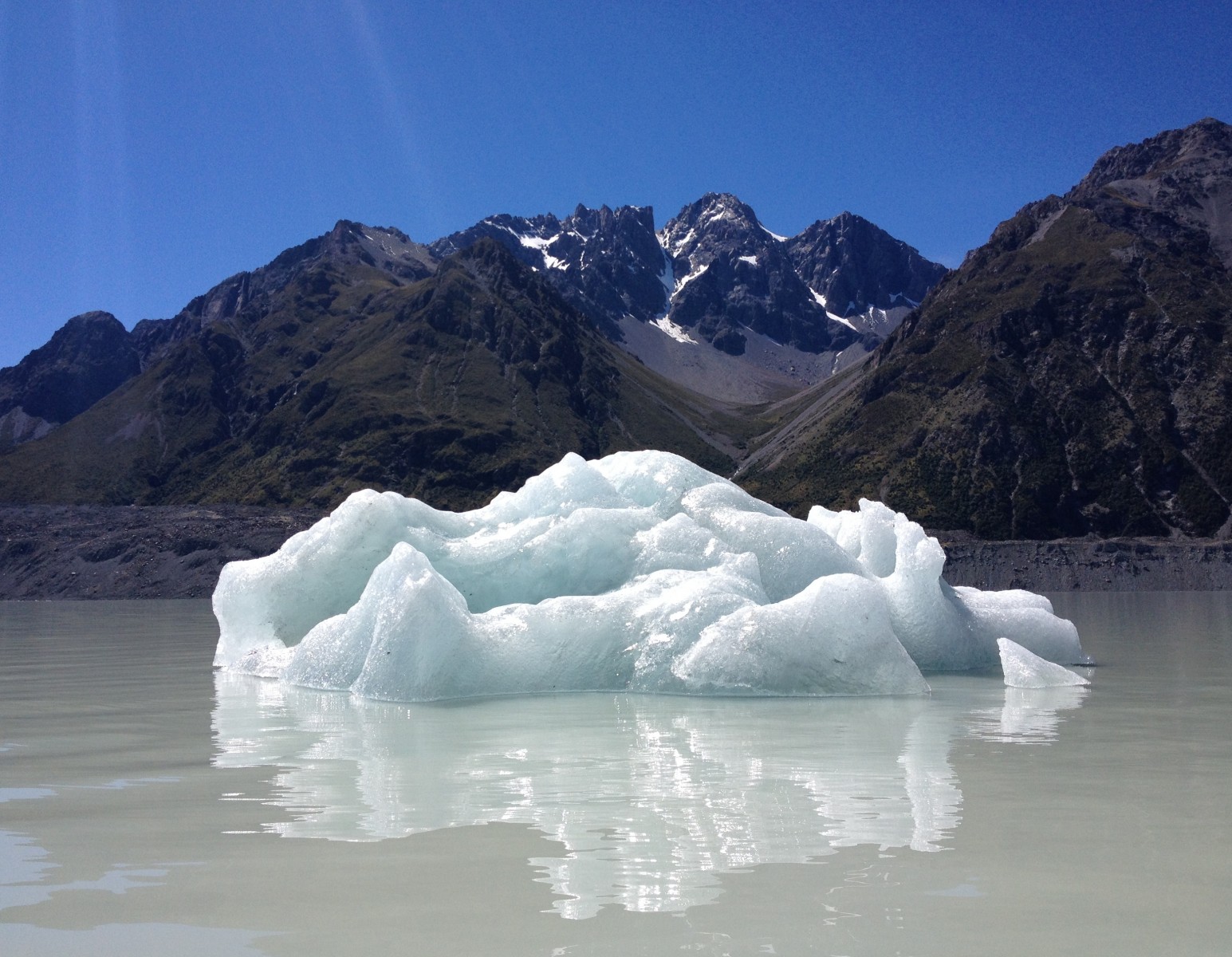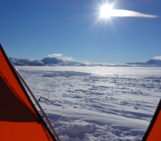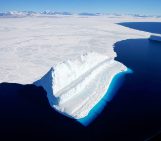With 2014 officially named the hottest year on record, there is evidence of the effects of rising global temperatures across the globe. The solitary, shimmering iceberg in today’s Imaggeo on Mondays photograph is a reminder that one of the best places to look for evidence of change is in glaciers. Daniela Domeisen tells the story of this lonely frozen block of ancient ice.
The picture shows an iceberg on Tasman glacier lake in the Southern Alps of New Zealand, in the centre of Aoraki / Mount Cook National Park. The lake consists of melt water from the Tasman glacier, which calves into the lake at its far end. The glacier is one of the largest in New Zealand and flows along New Zealand’s highest peaks, Mt Tasman and Mt Cook.
As most glaciers on Earth, the glaciers in Aoraki / Mount Cook National Park are retreating at a fast pace. The lower parts of the Tasman glacier are at less than 1000m above sea level and are therefore melting especially fast. The Tasman glacier lake has formed over the past two to three decades and has in the meantime reached a length of several kilometers. It is projected to almost double in size as the glacier retreats further.
Icebergs constantly calve from the Tasman glacier into the lake and drift down the lake, driven by a weak current towards the lake’s outflow while melting in the process. The ice contained in the icebergs is several thousand years old, beautifully transparent and clean when looking at a single piece of it.
The pictured iceberg was about 10 meters wide. From its shape, and melting pattern, it is likely that it had turned to its side after calving into the lake. With some force it was possible to tip the smaller icebergs and see a shiny blue surface which had been beautifully polished by the water.
On the lake, everything was completely peaceful and quiet, except for the distant sound of a continuous rippling and trickling coming from the moraines on the sides of the lake, as pictured in the background of the photo. Stones and rocks of various sizes slid down and fell into the lake as the ice inside the moraines melted in the bright, sunny and warm January weather.
The changes which are observed in most places as a result of the changing climate are often either too slow to be observed or invisible to the naked eye. The glacier, its lake and icebergs, however, are continuously changing, and a couple of hours spent on the water give a lively impression of a quiet place where things are changing fast enough to be able to observe a notable difference between the time one enters and leaves the place. The beauty of the glacier and its lake with the glittering icebergs provide a spectacular glimpse of a transient place.
By Daniela Domeisen, Research Analyst, MarexSpectron, London
If you pre-register for the 2015 General Assembly (Vienna, 12 – 17 April), you can take part in our annual photo competition! From 1 February up until 1 March, every participant pre-registered for the General Assembly can submit up three original photos and one moving image related to the Earth, planetary, and space sciences in competition for free registration to next year’s General Assembly! These can include fantastic field photos, a stunning shot of your favourite thin section, what you’ve captured out on holiday or under the electron microscope – if it’s geoscientific, it fits the bill. Find out more about how to take part at http://imaggeo.egu.eu/photo-contest/information/.





